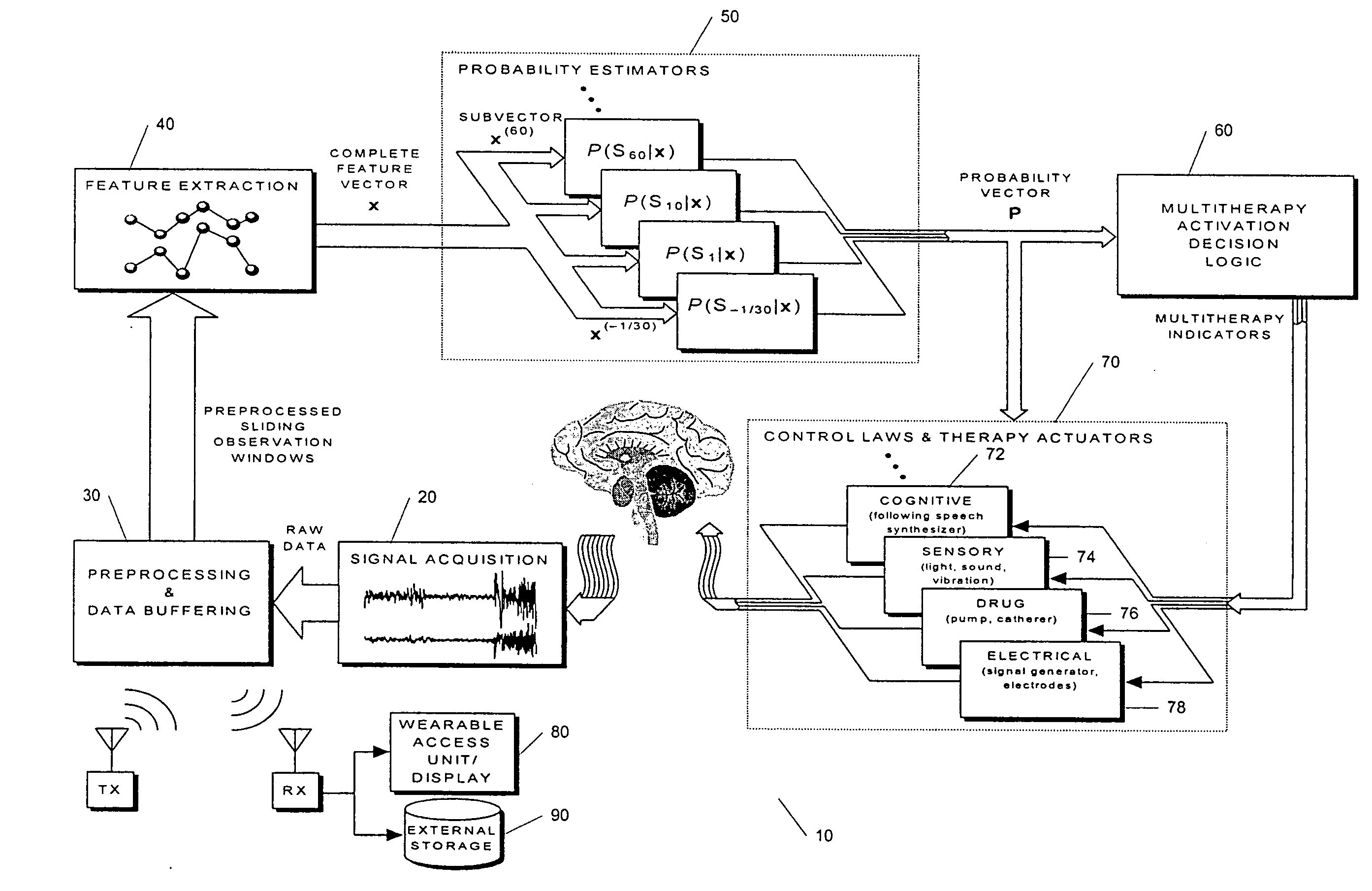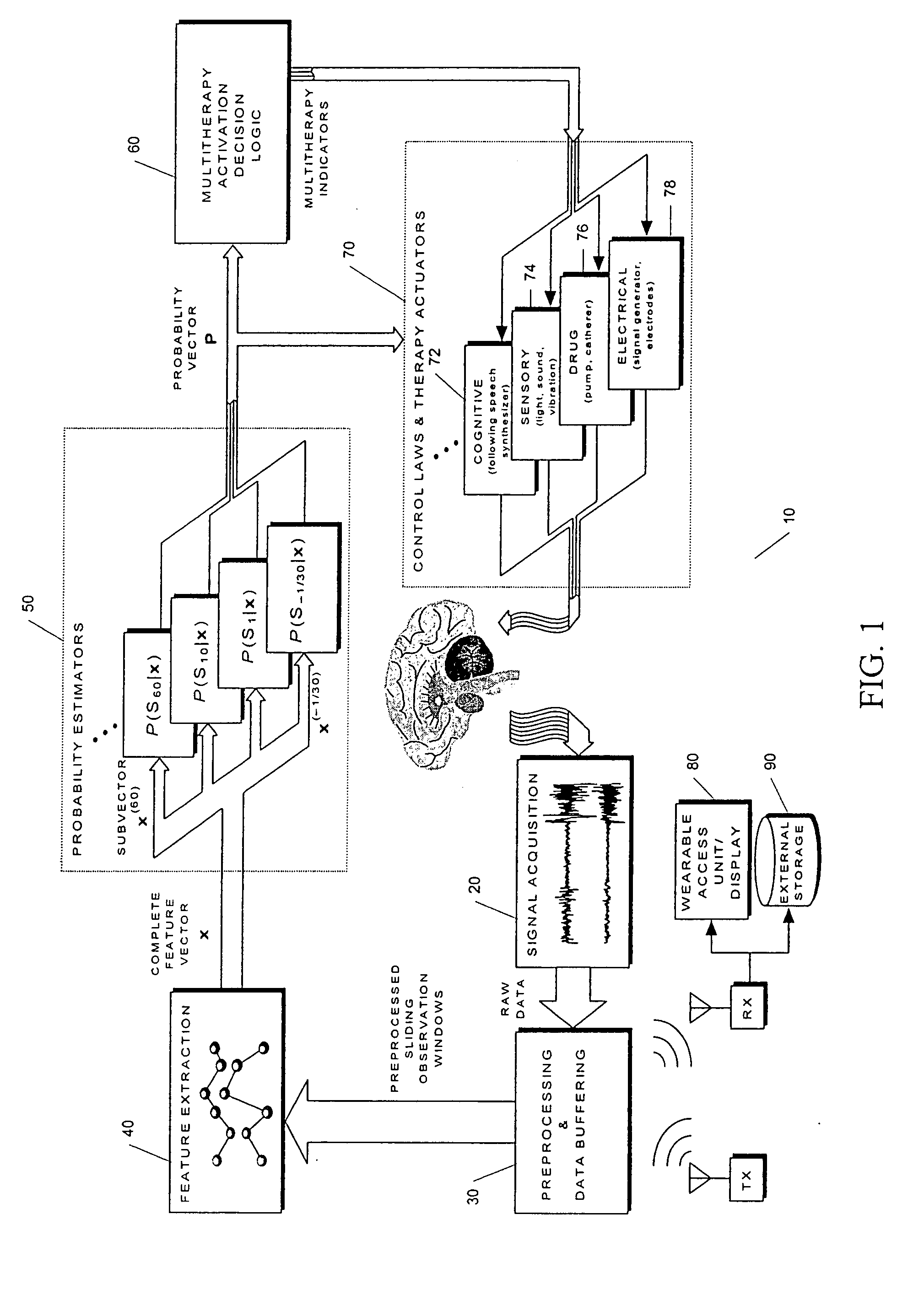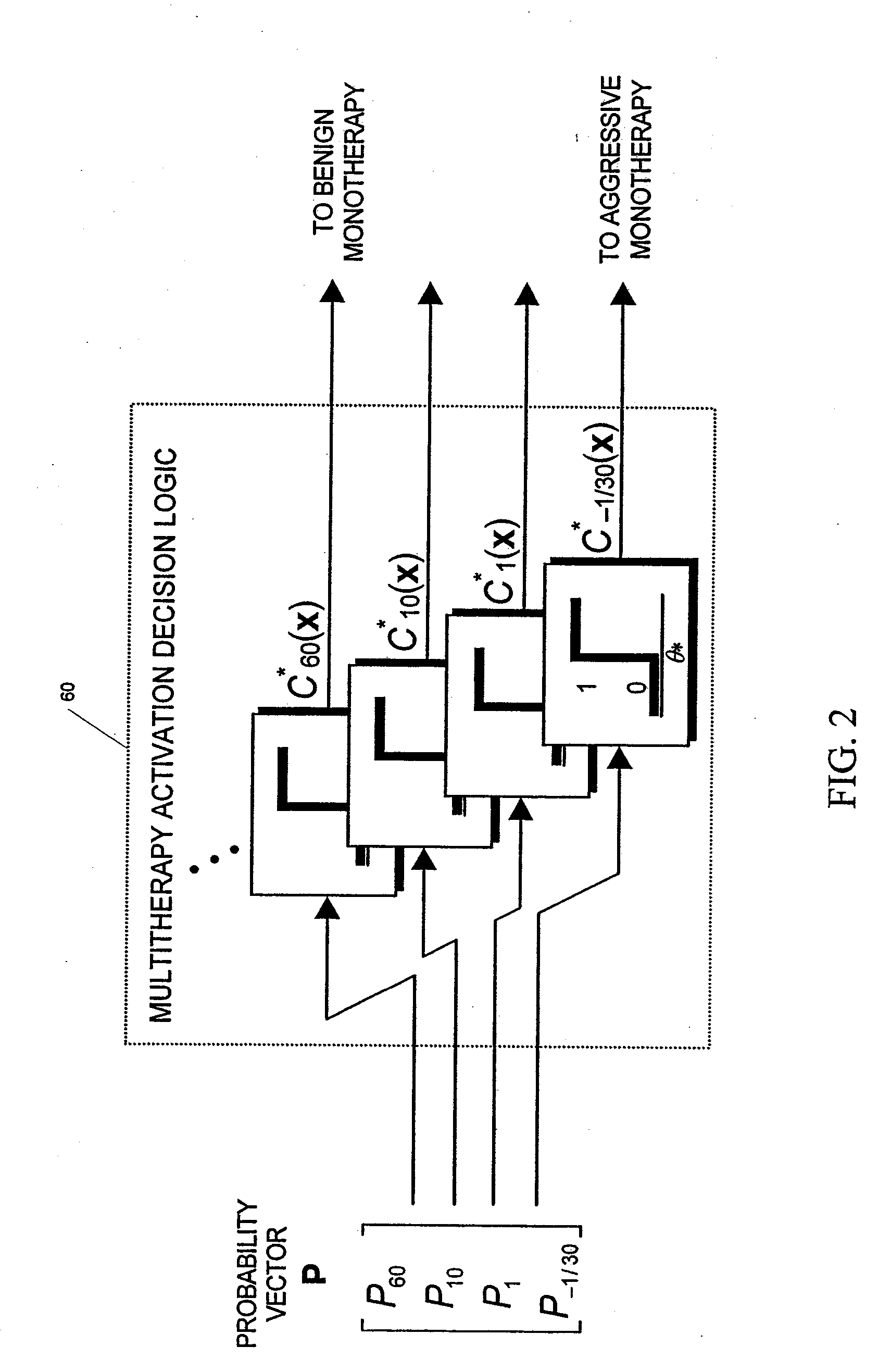Unified Probabilistic Framework For Predicting And Detecting Seizure Onsets In The Brain And Multitherapeutic Device
a probabilistic framework and brain technology, applied in the field of brain medical devices, can solve the problems of affecting the quality of life of an estimated 1 to 2% of the world's population, limited efficacy, and the inability to lead normal lives, so as to achieve sufficient time to discourage seizures and avert seizures in the brain
- Summary
- Abstract
- Description
- Claims
- Application Information
AI Technical Summary
Benefits of technology
Problems solved by technology
Method used
Image
Examples
Embodiment Construction
[0020] The present invention is directed to a method and an apparatus for predicting and detecting the onset of seizure disorders within a unified, multiresolution probabilistic framework that enables a portion of the apparatus to deliver automatically a progression of multiple therapies. The therapies range from benign to aggressive as the probabilities of seizure warrant, in order to prevent, abort or mitigate the intensity, duration, frequency and spread of seizures.
[0021]FIG. 1 illustrates an exemplary architecture of a seizure prediction and control system 10 in an online operation mode, according to the present invention. A signal acquisition portion 20 conditions (amplifies, filters, isolates, multiplexes, etc.), and digitizes multiple raw signals, preferably intracranial EEG (IEEG). The acquired multichannel data are preprocessed 30 to attenuate artifacts such as any residual 60 Hz contamination, bad transducer contact, etc. Other steps that may be associated with preproces...
PUM
 Login to View More
Login to View More Abstract
Description
Claims
Application Information
 Login to View More
Login to View More - R&D
- Intellectual Property
- Life Sciences
- Materials
- Tech Scout
- Unparalleled Data Quality
- Higher Quality Content
- 60% Fewer Hallucinations
Browse by: Latest US Patents, China's latest patents, Technical Efficacy Thesaurus, Application Domain, Technology Topic, Popular Technical Reports.
© 2025 PatSnap. All rights reserved.Legal|Privacy policy|Modern Slavery Act Transparency Statement|Sitemap|About US| Contact US: help@patsnap.com



